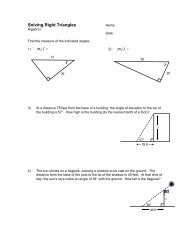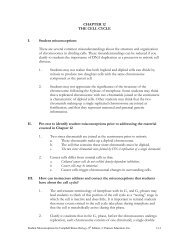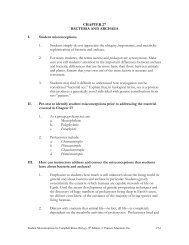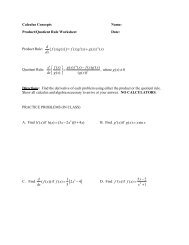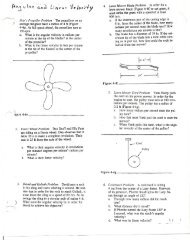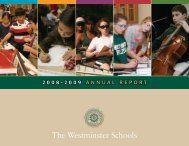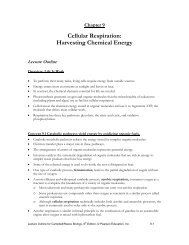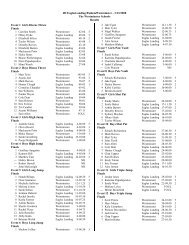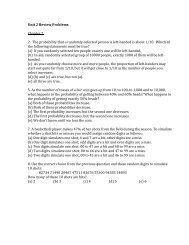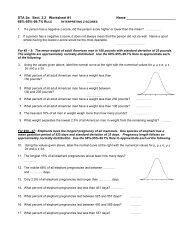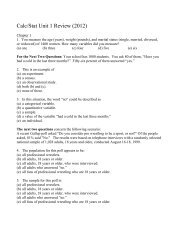CHAPTER 14 MENDEL AND THE GENE IDEA - Hancock High School
CHAPTER 14 MENDEL AND THE GENE IDEA - Hancock High School
CHAPTER 14 MENDEL AND THE GENE IDEA - Hancock High School
You also want an ePaper? Increase the reach of your titles
YUMPU automatically turns print PDFs into web optimized ePapers that Google loves.
o<br />
o<br />
The allele for yellow seeds (Y) is dominant to the allele for green seeds (y).<br />
The allele for round seeds (R) is dominant to the allele for wrinkled seeds (r).<br />
Mendel crossed true-breeding plants that had yellow, round seeds (YYRR) with true-breeding<br />
plants that had green, wrinkled seeds (yyrr).<br />
The F 1 plants are dihybrid individuals that are heterozygous for two characters (YyRr).<br />
One possible hypothesis is that the two characters are transmitted from parents to offspring as a<br />
package.<br />
o In this case, the Y and R alleles and the y and r alleles would stay together.<br />
○ If this were the case, the F 1 offspring would produce yellow, round seeds.<br />
○ The F 2 offspring would produce two phenotypes (yellow + round; green + wrinkled) in a<br />
3:1 ratio, just like a monohybrid cross.<br />
o This was not consistent with Mendel’s results.<br />
An alternative hypothesis is that the two pairs of alleles segregate independently of each other.<br />
o The presence of a specific allele for one trait in a gamete has no impact on the presence of a<br />
specific allele for the second trait.<br />
○ In our example, the F 1 offspring would still produce yellow, round seeds.<br />
○ When the F 1 offspring produced gametes, genes would be packaged into gametes with all<br />
possible allelic combinations.<br />
○ Four classes of gametes (YR, Yr, yR, and yr) would be produced in equal amounts.<br />
○ When sperm with four classes of alleles and ova with four classes of alleles combine, there<br />
are 16 equally probable ways in which the alleles can combine in the F 2 generation.<br />
○ These combinations produce four distinct phenotypes in a 9:3:3:1 ratio.<br />
○ This was consistent with Mendel’s experimental results.<br />
Mendel repeated the dihybrid cross experiment for other pairs of characters and always observed<br />
a 9:3:3:1 phenotypic ratio in the F 2 generation.<br />
○ Each character appeared to be inherited independently.<br />
○ If you follow just one character in these crosses, you will observe a 3:1 F 2 ratio, just as if this<br />
were a monohybrid cross.<br />
The independent assortment of each pair of alleles during gamete formation is called Mendel’s<br />
law of independent assortment: Each pair of alleles segregates independently during gamete<br />
formation.<br />
Strictly speaking, this law applies only to genes located on different, nonhomologous<br />
chromosomes.<br />
o Genes located near each other on the same chromosome tend to be inherited together and<br />
have more complex inheritance patterns than those predicted for the law of independent<br />
assortment.<br />
Concept <strong>14</strong>.2 The laws of probability govern Mendelian inheritance.<br />
Mendel’s laws of segregation and independent assortment reflect the same laws of probability<br />
that apply to tossing coins or rolling dice.<br />
Lecture Outline for Campbell/Reece Biology, 8 th Edition, © Pearson Education, Inc. <strong>14</strong>-5




